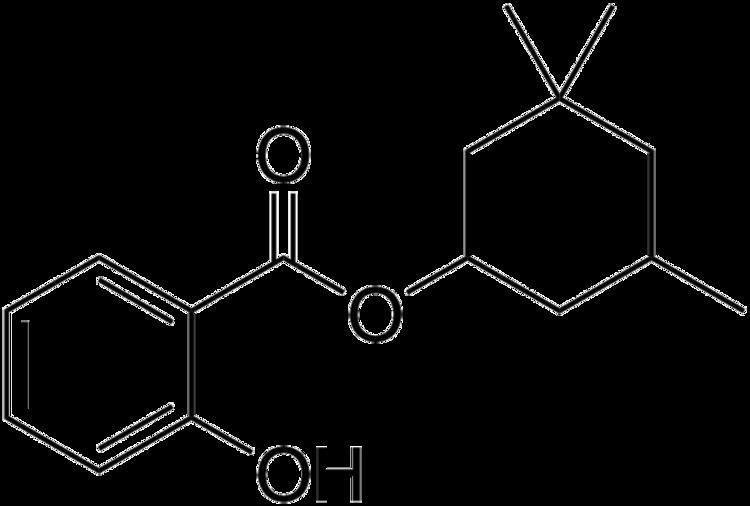 | ||
Homosalate is an organic compound used in some sunscreens. It is an ester formed from salicylic acid and 3,3,5-trimethylcyclohexanol, a derivative of cyclohexanol. Contained in 45% of U.S. sunscreens, it is used as a chemical UV filter. The salicylic acid portion of the molecule absorbs ultraviolet rays with a wavelength from 295 nm to 315 nm, protecting the skin from sun damage. The hydrophobic cyclohexanol portion provides greasiness that prevents it from dissolving in water.
Safety
Similar to other UV filter compounds, more homosalate is absorbed into the stratum corneum of the face (25% of applied dose) versus back of volunteers. Homosalate has been identified as an antiandrogen in vitro, as well as having estrogenic activity toward estrogen receptors α, and general in vitro estrogenic activity. Homosalate has been shown to be an antagonist toward androgen and estrogen receptors in vitro. There is also heavy evidence that homosalate, (and other UV filters) can break down into more toxic products.
No evidence of toxicity or side effects have been documented in vivo.
